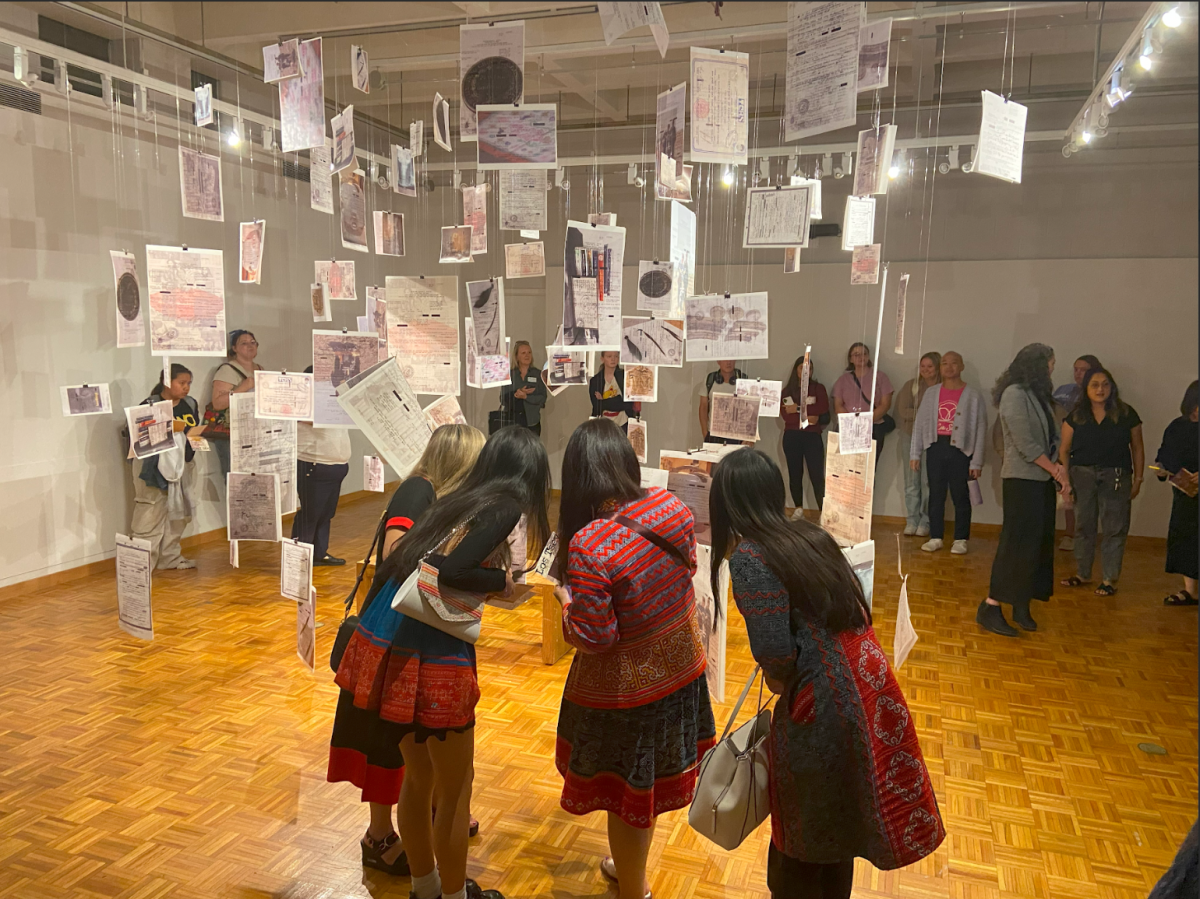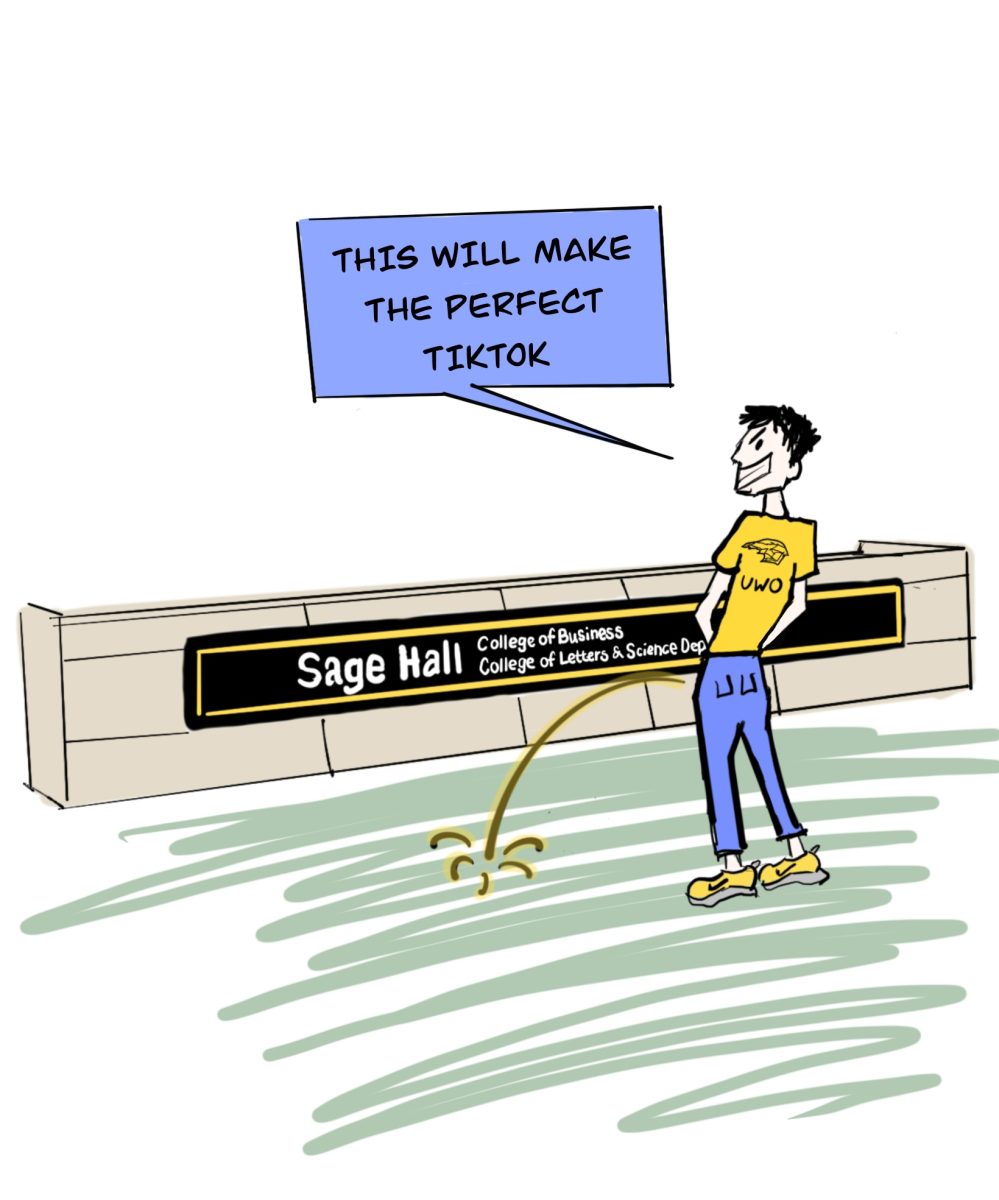UW Oshkosh opened a new exhibition at the Allen Priebe Gallery, “sawv tsee rov los os,” (or “lift yourself up and return”) created by Dej Txiaj Ntsim Yaj, and runs until April 25. This exhibition features personal and found objects that represent Hmong narratives, memories, culture and history.
Yaj was born in California and raised in Sheboygan, WI. She earned a Bachelor of Fine Arts from the UW Milwaukee in 2017, which led to her Master of Fine Arts degree from the University of Minnesota Twin Cities in 2020. Her Hmong installations reflect her ongoing exploration of her Hmong heritage.
Yaj started her drawing and painting series, observational drawing, around 2010 by taking photographs of her Hmong family and turning them into paintings and drawings.
Yaj noticed most people who came to her art shows were caucasian. She asked, “Where is the Hmong?” She felt her paintings started to lack agency or presence.
“I began to experience something odd as a painter; it started to feel exploited,” she said. “I started stretching really important intimate narratives of my family onto wooden stretchers to put my work on display, for it to be an object to exist in these galleries.”
Eventually, she became interested in the century-old Hmong ways in her practice, wanting to focus on textiles to carry a piece of Hmong heritage with her.
“I wanted to recenter this Hmong way of knowing, thinking something different would happen if I had re-centered something that my ancestors had been doing for a long time,” she said. “I wanted to privilege it.”
After asking her grandmother to teach her how to sew, her first project focused on embracing Hmong culture and creating clothing. Yaj was interested in capturing the history of Hmong fashion through textiles. Through her sewing, she learned about culture and history. She is still questioning her understanding of Hmong culture and identity.
“Clothing is able to embody the history of the body, particularly what my ancestors looked like,” she said.
In 2016, she created “Bullet Outfit,” representing the secret war in Laos in 1964, trying to bring back the stories and bodies of women and children that seemed to have never existed in history because of the war. The outfit also represented American imperialism because gun violence was becoming visible.
After placing herself in a position to learn and create how her ancestors used to, she found herself connecting to her Hmong identity.
“It felt like I was becoming kin to these images. I felt like I had some history with Hmong clothing and could talk about what these people wore. Because I spent time creating and forming the vocabulary that one would learn when trying to create something in the way of creating.”
In 2018, Yaj started a project, “Hnav Hmoob,” or wear Hmong. Her project has been going on for ¾ years, photographing her outfits every day and writing to reflect and digest the experience of every day.
During Yaj’s MFA program and “Hnav Hmoob,” Yaj began questioning her connections with her past ancestors. Why did she feel compelled to try and figure out who they were or what they stood for?
“I thought a lot about these Hmong women and girls and started to theorize who they are and why they show up consistently. What is it about them that continues to haunt me? Why is it that they become an allegory?”
Yaj relates to Hmong culture by adopting the framework of Avery Gordon’s “Ghostly Matters: Haunting and the Sociological Imagination.” In the book, Gordon explains that the haunting happens because the ghost asks for something to be done.
“In particular, I think about the ghost as somebody who was missing a body, missing a form of agency, a presence,” she said. “I think part of the ghost is a loss the community has collectively experienced.”
Yaj wanted to understand these women and girls from Hmong culture and become more connected with her ancestors by giving them an agent.
“Essentially, what is happening is I am offering my body as a vessel to be possessed by these women and girls, me performing Hmong to embody this ghost to find me as a vessel to stare back at people.”
Yaj started engaging in Hmong healing rituals. It was her way of claiming space and acknowledging that she was doing what she wanted and belonged. She made an installation that became about home. She felt as if something was missing. This installation, “Tsev,” helps Yaj reconnect the meaning of the Hmong people’s history and her memories of home.
“I came to a place to call these lost homes, all these Hmong people that died or were stuck somewhere,” Yaj said. “I started to engage in ancestral spirituality, to call the spirits and lift them back up … to possibly heal the Hmong community.”
Yaj explained the hardships of wearing Hmong clothing around the world. She said she felt isolated and didn’t think she could relate to anyone. She started to find kinship through sightings, like a photo at a bus stop, knowing that her culture was being represented.
During her MFA program, she went to Berlin, and during TSA checks in Frankfurt, Yaj felt violated. Because she was so comfortable with her fashion, she didn’t think about how her outfits might look to people who might not know what it meant to wear Hmong fashion.
“It felt dangerous; [TSA] touched everything, and it was such a violating experience; it made me think about why is it that my people stopped wearing Hmong, something so basic; perhaps we had to stop wearing Hmong to survive. We stopped wearing Hmong to look ambiguous and mixed.”
Recapping her projects and some experiences, Yaj learned about moving parts and how they provide a process of grieving the things lost in history. She has her body as a vessel for her ancestors to speak without having a voice. She also wants her work recognized by resisting micro-aggressive questioning and racism.
You can visit the Allen Priebe Gallery showcasing Yaj’s artwork until April 25. Check online for the gallery schedule.









